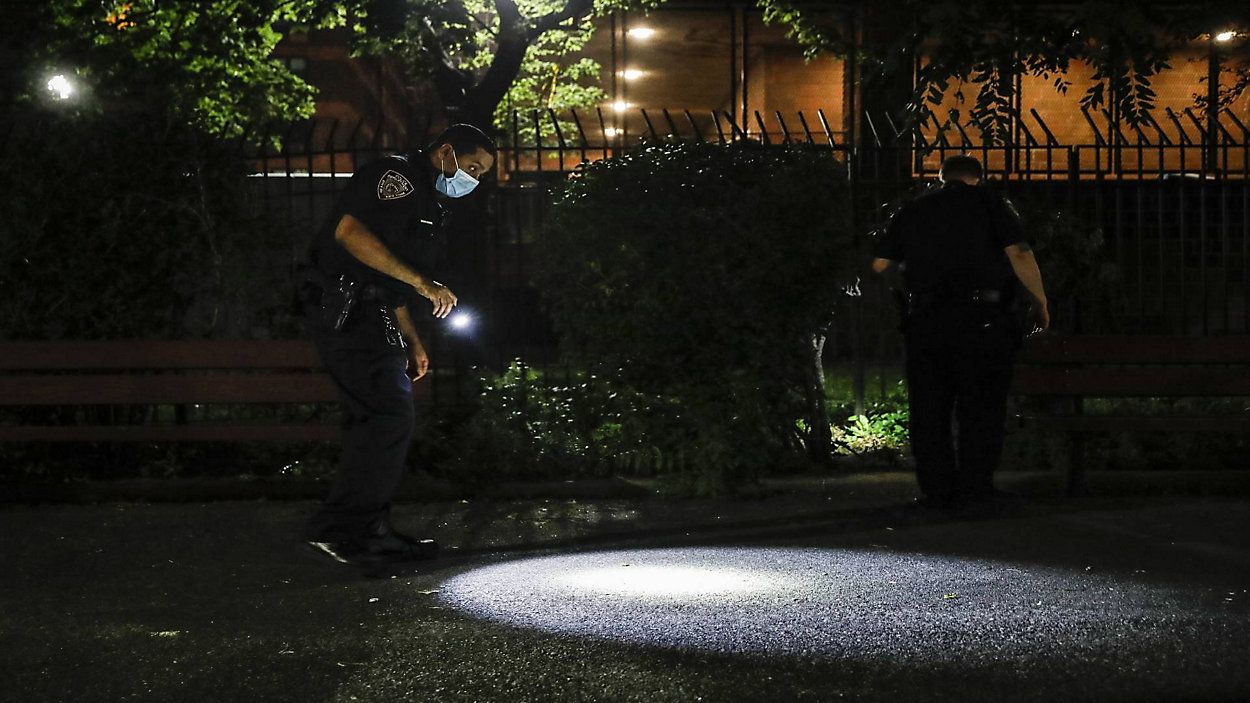Less than a year after vowing to cut the NYPD budget, Mayor Bill de Blasio rolled out plans Tuesday to fund a new precinct in Queens and expand gun violence prevention programs in areas of the city that are seeing a spike in shootings.
The new programs and projects come 10 months after the City Council passed a budget that shifted $1 billion away from the New York City Police Department and reflected longtime efforts to improve policing.
The new precinct — to be numbered the 116th — will serve neighborhoods in southeastern Queens that are now covered by the 105th Precinct, which has the largest geographic area of any NYPD precinct. The mayor says the change will improve police response times.
What You Need To Know
- The city is funding a new precinct and station house in Southeastern Queens, after last year eliminating funding for it
- Community activists have been pushing for the precinct for more than 40 years, hoping to reduce police response times
- The mayor also announced a series of initiatives to reduce gun violence in the city, which has spiked this year
- The moves come less than a year after de Blasio pledged to reduce police funding
The building, which is expected to cost $105 million, will include a community center. Community activists first requested a new precinct from the city in the 1970s.
“These are things that the community has said will improve the quality of life, that will allow the community to get what they need,” de Blasio said.
The mayor also announced a series of initiatives to stem gun violence. The number of shooting incidents and victims citywide is up by more than 50% year-to-date, even as major crime is down 12.7%, according to NYPD statistics.
The NYPD will send 200 additional officers currently on administrative assignments to precincts facing the highest surges of gun violence. Those areas are likely to include East New York and Brownsville in Brooklyn, and Belmont and Crotona in the Bronx, Rodney Harrison, the NYPD’s chief of department, said at the Tuesday news conference.
The city is also relaunching Ceasefire, a program that uses community members to encourage people engaging in gun violence to stop, increase rewards for tips relating to gun violence to $5,000 and launch an ad campaign for city gun buybacks.
Last year, in a similar effort to squelch gun violence, the city deployed 300 officers to areas with a high rate of gun violence. The year saw record gun violence incidents, which de Blasio attributed to a “literal perfect storm.”
“Global pandemic, society shut down, a million jobs lost, schools shut down, houses of worship shut down,” he said. “The social fabric was shut down.”
De Blasio also said that the city will push the court system to resume more in-person hearings, to diminish the backlog of cases related to gun violence and create a joint task force to target likely shooters. The task force will begin operations in Queens, and be composed of district attorneys, NYPD officers, personnel in the Cure Violence anti-crime campaign and city agencies.
“That’s gonna allow everything now to start moving forward,” de Blasio said. “It’s gonna create a culture of consequence, which you need.”
The city is also doubling its Cure Violence personnel at 31 sites, increasing the number of youth summer employment slots from 800 to 2,000 and sponsoring Saturday night basketball games at 100 sites around the city.
De Blasio framed the measures as an investment in community safety, as opposed to an increase in police presence in outer borough communities.
Activists who supported the call to defund police departments last year in the wake of the police killing of George Floyd in Minneapolis accused the mayor of hypocrisy.
Nick Encalada-Malinowski, an activist with the group VOCAL-NY, pointed to the announcements Tuesday in a tweet as “continued evidence” that the mayor and City Council effort to cut the budget for the NYPD “was a total mirage.”
De Blasio also on Tuesday defended the creation of the new 116th Precinct, and its new station house, saying that it is financially possible this year, whereas last year the economic shutdown caused by the COVID-19 pandemic required “tradeoffs.”
Last year, de Blasio cut funding for the new station house, instead allocating some of the money toward a community recreation center. He said the cut was an example of his efforts to reduce funding for the NYPD, alongside canceling a July police academy class and reducing overtime by hundreds of millions of dollars.
“There was an environment at that moment where the central concern that I was responding to and that the City Council was responding to was investing in communities,” de Blasio said. “Now because there are some resources we can make good on that deep desire in the community for that building.”



